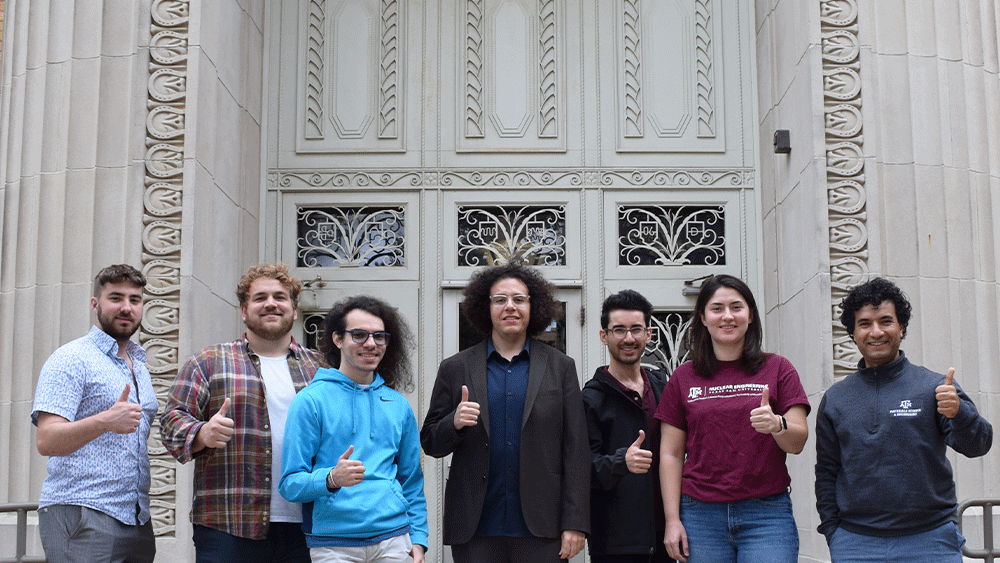
Through three awards granted by the United States Department of Energy's Nuclear Energy University Program, the Department of Nuclear Engineering at Texas A&M University is leading efforts for a push toward a cleaner energy future. The awards will fund research to optimize current and novel nuclear materials to further establish nuclear energy as a viable, sustainable source.
"We'd like to develop superior materials for reactors and gain a fundamental understanding of the degradation mechanisms of different types of nuclear fuels," said Dr. Karim Ahmed, a recipient of all three awards and an assistant professor in the nuclear engineering department. "The grants will help us put the spotlight on nuclear energy as an emission-free source deeming it a critical tool in combating climate change."
The first project, "Demonstration of a Methodology for Direct Validation of MARMOT Irradiation-Induced Microstructural Evolution and Physical Property Models Using U-10Zr," determines the effects of irradiation on U-10Zr alloys, a material that could potentially be used to build fast reactors. The metals will be run through an advanced test reactor to determine if changes in microstructure and thermal conductivity occur due to radiation. The researchers will then use this information to validate the accuracy of the mesoscale MARMOT models, which are the current standard used to predict material performance under irradiation.
The second study is titled "Statistical Modeling of the Effect of Microstructural Heterogeneity on the Irradiation Behavior of TRISO Fuel Buffer Layer." This proposal investigates the tearing of the tristructural isotropic (TRISO) particle fuel buffer layer. TRISO fuel is made of uranium, carbon and oxygen and is regarded as the most robust fuel on the planet. The carbonaceous buffer prevents swelling and absorbs fission gases. While TRISO particles have exhibited excellent performance, the buffer layer in some of these fuel particles tends to debond and fracture. The researchers envision that a firm understanding of the microstructure-property relationships will help develop predictive models for buffer malfunction.
The third project, "Multiscale Modeling and Experiments for Investigating High Burnup LWR Fuel Rod Behavior Under Normal and Transient Conditions," will help the researchers achieve a fundamental understanding of the fuel rod behavior under novel regimes, dubbed "high burnup" conditions. To increase the fuel peak burnup beyond the current regulatory limit, the team will combine modeling, quantitative characterization and measurements to investigate the effects of the nuclear fuel microstructure on the performance of fuel rods at high burnup.
Together, the grants will total nearly $3 million shared between Texas A&M, the University of Wisconsin-Madison, Los Alamos National Laboratory, Idaho National Laboratory and Oak Ridge National Laboratory. Over $1 million will be awarded to Texas A&M with a part going toward funding six graduate students by 2024, helping educate and prepare the next generation of the nation's skilled workforce.